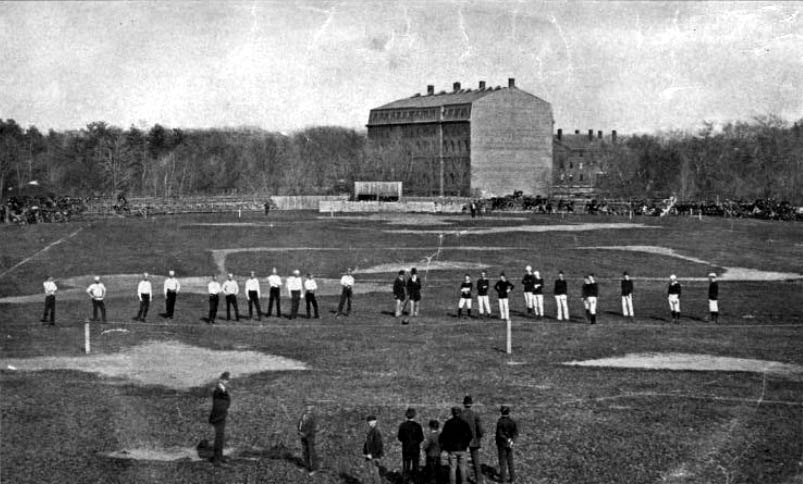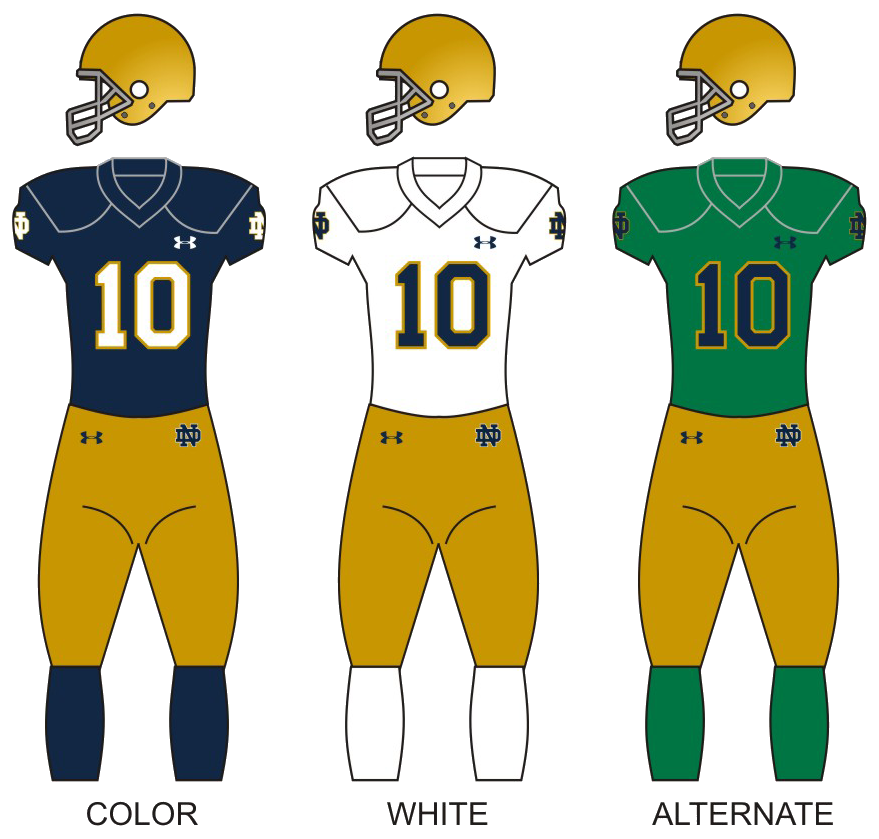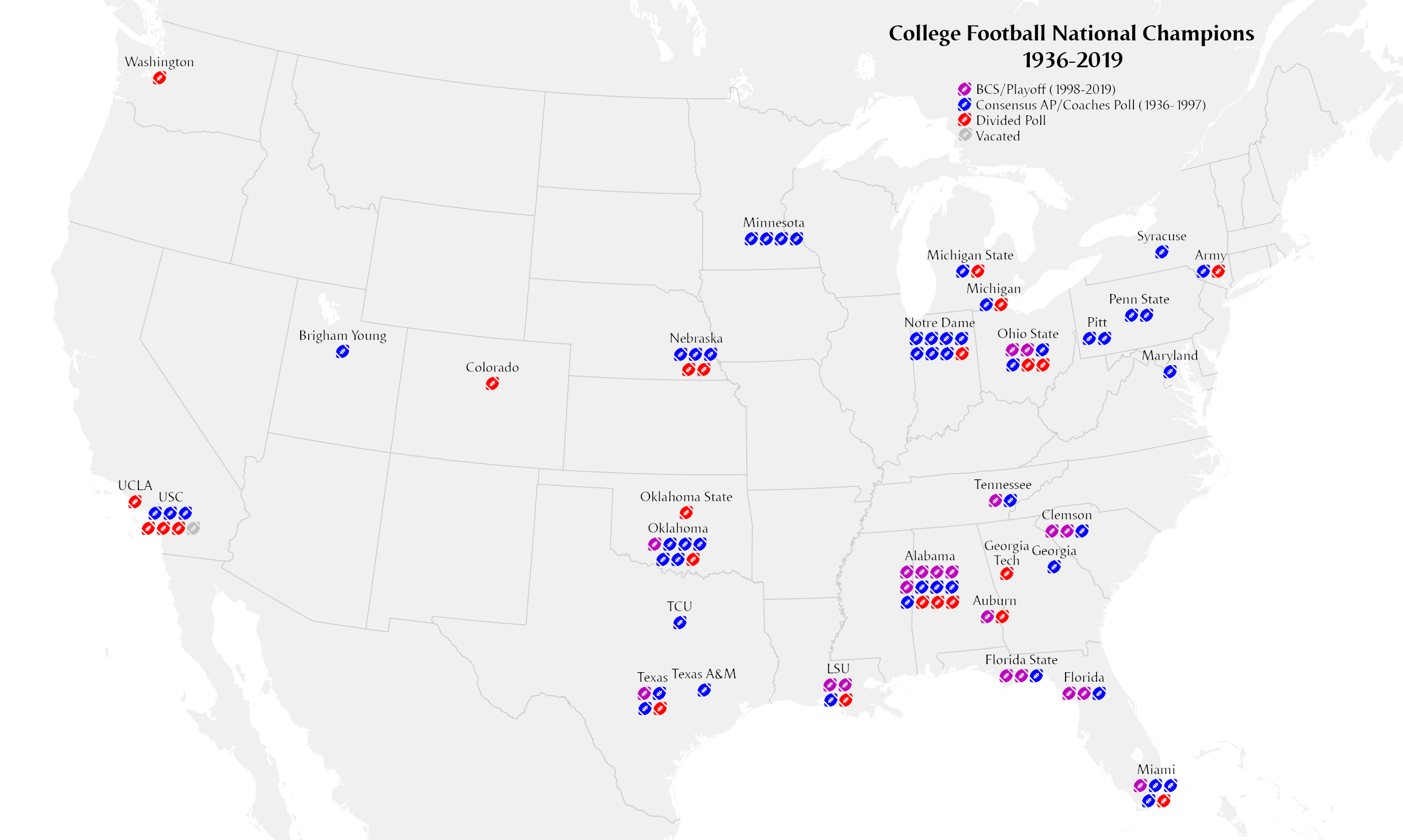|
Bowl Alliance
The Bowl Alliance was an agreement among college football bowl games (specifically the Sugar, Orange, and Fiesta Bowls) for the purpose of trying to match the top two teams in a national championship game and to provide quality bowl game matchups for the champions of its member conferences. The agreement was in place for the 1995, 1996, and 1997 seasons and had replaced the Bowl Coalition. Each participating team in the Bowl Alliance Championship received $8.5 million from the television sponsors. Background In its beginnings, the Bowl Alliance involved the SEC, Big Eight, SWC, ACC, and Big East conference champions, as well as independent Notre Dame. Because of this, only one at-large slot was available for teams to vie for. With the disbanding of the Big Eight and SWC following the 1995 football season and the formation of the Big 12 Conference in its wake, an additional at-large bid became available. The Alliance bowls were held on three successive days in each of the ... [...More Info...] [...Related Items...] OR: [Wikipedia] [Google] [Baidu] |
1995 NCAA Division I-A Football Season
The 1995 NCAA Division I-A football season was the first year of the Bowl Alliance. Tom Osborne led Nebraska to its second straight national title with a victory over Florida in the Fiesta Bowl. This matchup was only possible because of the new Bowl Alliance. Under the old system, Nebraska would have been tied to the Orange Bowl and Florida to the Sugar Bowl. The Bowl Alliance created a national championship game which would rotate between the Orange, Sugar, and Fiesta Bowls free of conference tie-ins and featuring the No. 1 and No. 2 teams as chosen by the Bowl Alliance Poll. The Pac-10 and Big Ten chose not to participate, keeping their tie-ins with the Rose Bowl. Nebraska was a football dynasty, playing in its third consecutive national title game, and became the first school to claim back-to-back titles since the 1970s. This was a dominant Nebraska team, averaging 52 points per game and a 39-point average margin of victory, including a 62–24 victory over Florida. This lop ... [...More Info...] [...Related Items...] OR: [Wikipedia] [Google] [Baidu] |
College Football
College football (french: Football universitaire) refers to gridiron football played by teams of student athletes. It was through college football play that American football in the United States, American football rules first gained popularity in the United States. Unlike most other sports in North America, no official minor league farm team, farm organizations exist in American or Canadian football. Therefore, college football is generally considered to be the second tier of American and Canadian football; one step ahead of High school football, high school competition, and one step below professional competition (the National Football League, NFL). In some areas of the US, especially the South and the Midwest, college football is more popular than professional football, and for much of the 20th century college football was seen as more prestigious. A player's performance in college football directly impacts his chances of playing professional football. The best collegiate ... [...More Info...] [...Related Items...] OR: [Wikipedia] [Google] [Baidu] |
AP Poll
The Associated Press poll (AP poll) provides weekly rankings of the top 25 NCAA teams in one of three Division I college sports: football, men's basketball and women's basketball. The rankings are compiled by polling 62 sportswriters and broadcasters from across the nation. Each voter provides their own ranking of the top 25 teams, and the individual rankings are then combined to produce the national ranking by giving a team 25 points for a first place vote, 24 for a second place vote, and so on down to 1 point for a twenty-fifth place vote. Ballots of the voting members in the AP poll are made public. College football The football poll is released Sundays at 2 pm Eastern time during the season, unless ranked teams have not finished their games. History The AP college football poll's origins go back to the 1930s. The news media began running their own polls of sports writers to determine, by popular opinion, the best college football teams in the country. One of the earliest ... [...More Info...] [...Related Items...] OR: [Wikipedia] [Google] [Baidu] |
New Year's Day
New Year's Day is a festival observed in most of the world on 1 January, the first day of the year in the modern Gregorian calendar. 1 January is also New Year's Day on the Julian calendar, but this is not the same day as the Gregorian one. Whilst most solar calendars (like the Gregorian and Julian) begin the year regularly at or near the northern winter solstice, cultures that observe a lunisolar or lunar calendar celebrate their New Year (such as the Chinese New Year and the Islamic New Year) at less fixed points relative to the solar year. In pre-Christian Rome under the Julian calendar, the day was dedicated to Janus, god of gateways and beginnings, for whom January is also named. From Roman times until the middle of the 18th century, the new year was celebrated at various stages and in various parts of Christian Europe on 25 December, on 1 March, on 25 March and on the movable feast of Easter. In the present day, with most countries now using the Gregorian calenda ... [...More Info...] [...Related Items...] OR: [Wikipedia] [Google] [Baidu] |
New Year's Eve
In the Gregorian calendar, New Year's Eve, also known as Old Year's Day or Saint Sylvester's Day in many countries, is the evening or the entire day of the last day of the year, on 31 December. The last day of the year is commonly referred to as “New Year’s Eve”. In many countries, New Year's Eve is celebrated with dancing, eating, drinking, and watching or lighting fireworks. Some Christians attend a watchnight service. The celebrations generally go on past midnight into New Year's Day, 1 January. The Line Islands (part of Kiribati) and Tonga, in the Pacific Ocean, are the first places to welcome the New Year, while American Samoa, Baker Island and Howland Island (part of the United States Minor Outlying Islands) are among the last. By region Africa Algeria In Algeria, New Year's Eve (french: Réveillon; '' ar, Ra’s al-‘Ām'') is usually celebrated with family and friends. In the largest cities, such as Algiers, Constantine, Annaba, Oran, Sétif, and Béj ... [...More Info...] [...Related Items...] OR: [Wikipedia] [Google] [Baidu] |
Notre Dame Fighting Irish Football
The Notre Dame Fighting Irish football team is the intercollegiate football team representing the University of Notre Dame in Notre Dame, Indiana, north of the city of South Bend, Indiana. The team plays its home games at the campus' Notre Dame Stadium, which has a capacity of 77,622. Notre Dame is one of seven schools that competes as an Independent at the National Collegiate Athletic Association (NCAA) Football Bowl Subdivision (FBS) level; however, they play five games a year against opponents from the Atlantic Coast Conference (ACC), of which Notre Dame is a member in all other sports except ice hockey. " The school claims 11 [...More Info...] [...Related Items...] OR: [Wikipedia] [Google] [Baidu] |
Big East Conference (1979–2013)
The Big East Conference was a collegiate athletics conference that consisted of as many as 16 universities in the eastern half of the United States from 1979 to 2013. The conference's members participated in 24 NCAA sports. The conference had a history of success at the national level in basketball throughout its history, while its shorter (1991 to 2013) football program, created by inviting one college and four other "associate members" (their football programs only) into the conference, resulted in two national championships. In basketball, Big East teams made 18 Final Four appearances and won 7 NCAA championships as Big East members through 2013 (UConn with three, Georgetown, Syracuse, Louisville and Villanova with one each). Of the Big East's full members, all but South Florida attended the Final Four, the most of any conference, though Marquette, DePaul, Notre Dame, Rutgers, Cincinnati, and Pittsburgh made all their trips before joining the Big East. In 2011, the Big Eas ... [...More Info...] [...Related Items...] OR: [Wikipedia] [Google] [Baidu] |
Atlantic Coast Conference
The Atlantic Coast Conference (ACC) is a collegiate athletic conference located in the eastern United States. Headquartered in Greensboro, North Carolina, the ACC's fifteen member universities compete in the National Collegiate Athletic Association (NCAA)'s Division I. ACC football teams compete in the NCAA Division I Football Bowl Subdivision. The ACC sponsors competition in twenty-five sports with many of its member institutions held in high regard nationally. Current members of the conference are Boston College, Clemson University, Duke University, Georgia Institute of Technology, Florida State University, North Carolina State University, Syracuse University, the University of Louisville, the University of Miami, the University of North Carolina, the University of Notre Dame, the University of Pittsburgh, the University of Virginia, Virginia Polytechnic Institute and State University, and Wake Forest University. ACC teams and athletes have claimed dozens of natio ... [...More Info...] [...Related Items...] OR: [Wikipedia] [Google] [Baidu] |
Southwest Conference
The Southwest Conference (SWC) was an NCAA Division I college athletic conference in the United States that existed from 1914 to 1996. Composed primarily of schools from Texas, at various times the conference included schools from Oklahoma and Arkansas. For most of its history, the core members of the conference were Texas-based schools plus one in Arkansas: Baylor University, Rice University, Southern Methodist University, Texas A&M University, Texas Christian University, Texas Tech University, the University of Arkansas and the University of Texas at Austin. After a long period of stability, the conference's overall athletic prowess began to decline throughout the 1980s, due in part to numerous member schools violating NCAA recruiting rules, culminating in the suspension of the entire SMU football program ("death penalty") for the 1987 and 1988 seasons. Arkansas, after years of feeling like an outsider in the conference, left after the 1990–91 school year to join t ... [...More Info...] [...Related Items...] OR: [Wikipedia] [Google] [Baidu] |
1996 NCAA Division I-A Football Season
The 1996 NCAA Division I-A football season ended with the Florida Gators being crowned National Champions after defeating rival Florida State in the Sugar Bowl, which was the season's designated Bowl Alliance national championship game. Florida had faced Florida State earlier in the year, when they were ranked No. 1 and No. 2, and lost 24–21. However, unranked Texas's upset of No. 3 Nebraska in the first ever Big 12 Championship Game set up the rematch of in-state rivals in New Orleans. In the Sugar Bowl, Florida's Heisman Trophy-winning senior quarterback Danny Wuerffel and head coach Steve Spurrier led the Gators to a 52–20 victory and their first national championship. Because the Pac-10 and Big Ten Conferences were not yet part of the Bowl Alliance, their champions met in the Rose Bowl as they had for decades. In 1996, these conference champions were potential national title contenders in No. 2 Arizona State and No. 4 Ohio State. In a close Rose Bowl contest, Arizona S ... [...More Info...] [...Related Items...] OR: [Wikipedia] [Google] [Baidu] |
Bowl Game
In North America, a bowl game is one of a number of post-season college football games that are primarily played by teams belonging to the NCAA's Division I Football Bowl Subdivision (FBS). For most of its history, the Division I Bowl Subdivision had avoided using a playoff tournament to determine an annual national champion, which was instead traditionally determined by a vote of sports writers and other non-players. In place of such a playoff, various cities across the United States developed their own regional festivals featuring post-season college football games. Prior to 2002, bowl game statistics were not included in players' career totals. Despite attempts to establish a permanent system to determine the FBS national champion on the field (such as the Bowl Coalition from 1992 to 1994, the Bowl Alliance from 1995 to 1997, the Bowl Championship Series from 1998 to 2013, and the College Football Playoff from 2014 to the present), various bowl games continue to be he ... [...More Info...] [...Related Items...] OR: [Wikipedia] [Google] [Baidu] |
College Football National Championships In NCAA Division I FBS
A national championship in the highest level of college football in the United States, currently the NCAA Division I Football Bowl Subdivision (FBS), is a designation awarded annually by various organizations to their selection of the best college football team. Division I FBS football is the only National Collegiate Athletic Association (NCAA) sport for which the NCAA does not sanction a yearly championship event. As such, it is sometimes unofficially referred to as a " mythical national championship". Due to the lack of an official NCAA title, determining the nation's top college football team has often engendered controversy. A championship team is independently declared by multiple individuals and organizations, often referred to as "selectors". These choices are not always unanimous. In 1969 even President of the United States Richard Nixon made a selection by announcing, ahead of the season-ending "game of the century" between No. 1 Texas and No. 2 Arkansas, that the winn ... [...More Info...] [...Related Items...] OR: [Wikipedia] [Google] [Baidu] |







